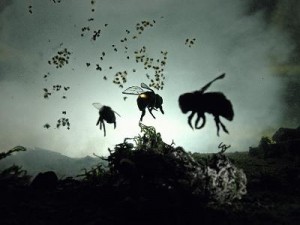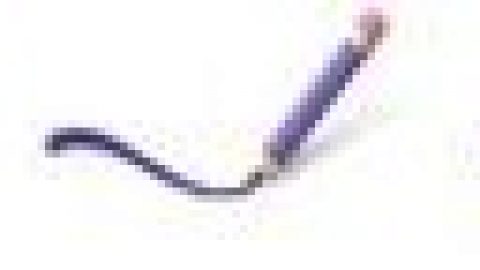In recent years documentaries including The 11th Hour and An Inconvenient Truth have been visually provocative wake-up calls about our impacts on the environment. Add Vanishing of the Bees as this year’s very important “call to action” for our environment.
Honeybees from just one hive can visit more than 100,000 flowers in a single day (thus the phrase, “Busy as a bee!”). Honeybees collect pollen full of proteins, sugars, carbs, enzymes, minerals, and vitamins for food and to make honey. They also have one of the most important jobs in nature—pollination. There’s no man-made alternative to pollination; without the honeybee, our food sources would be much more limited.
Lately, this dance with nature has been stressed for reasons still unclear. From Argentina, China, France and Italy to the U.S., bees literally have been disappearing without a trace (no worker bees in the colony, and no dead bees to be seen anywhere in the area) in something that has come to be known as Colony Collapse Disorder (CCD).
Documentary filmmakers Maryam Henein and George Langworthy in Vanishing of the Bees investigate how bees began disappearing around the planet and look at possible suspects, including what are called systemic pesticides.
Narrated by actress Ellen Page (Juno and Inception), the documentary follows two committed beekeepers, David Hackenburg and David Mendes. Hackenburg, who manages 3,000 hives in Pennsylvania, sounded the alarm in 2006 of huge bee losses. Mendes, a Floridian with 7,000 hives, joined Hackenburg in the search for answers to CCD, including a trip to France to meet with beekeepers.
France had problems beginning in 1994 when farmers began using a systemic pesticide, Gaucho, made by Bayer. French beekeepers banded together and protested Bayer. Ultimately, the French agriculture secretary banned the use of Gaucho, and French bees appear to have had a comeback.
Besides systemic pesticides, the filmmakers look at other potential culprits for the massive collapse, including corporate farming approaches which create vast monocultures that contradict natural order.
Food activist and author Michael Pollan lends an important voice to Vanishing of the Bees. He says, “In one sense, it’s a mystery, but in the larger sense we know exactly what’s responsible—these huge monocultures that are making bees’ lives very difficult and creating conditions where they’re vulnerable to disease and exposed to pesticides. My take on colony collapse is that it is one of the signs—one of the really unmistakable signs—that our food system is unsustainable.”
Besides building tremendous awareness of the problem, Vanishing of the Bees offers some practical choices that individuals can make to help save the bees. Among them are supporting organic farmers and shopping at organic farmers’ markets, not using toxic chemicals in gardens and yards, growing your own gardens, replacing lawns with flowering plants and advocating for food systems that will better support bees.
For the writer, Vanishing of the Bees shows the importance of crafting a compelling narrative. At first blush, bees don’t engender the warm and fuzzy feelings that endangered animals, such as polar bears, tigers and wolves, do. But through strong storytelling, the filmmakers have incorporated interviews and images that will make the viewers’ hearts break for the bee.
As well, this documentary is a good example of both the importance of having a clear point-of-view that carries through and of doing the extensive research and collecting the supporting footage. It’s clear in viewing the film and talking with the filmmakers that this was a labor of love involving hundreds of hours of research, travel and interviews to tell this very significant environmental story that’s still unfolding.
Visit vanishingbees.com to find screenings in your local area or to order a copy for yourself or for home screenings and other screening options. Bonus extras on the DVD include information about bee rescue and beekeeping in France, including a look at the bee hives atop the Paris Opera House.
5 or 5 Purple Pencils
Tags: Documentary Ellen Page Filmmaking Maria Fotopoulos Vanishing of the Bees Write On! Reviews









Comments are closed.
I think it’s wonderful that people are trying to save the honey bee, but there are over 4,000 species of NATIVE bees (honey bees are not native to North America) that were successfully pollinating our plants for millions of years before the European honey bee was introduced to Jamestown, VA about 400 years ago. No, native bee species don’t make honey, but they don’t sting either, and they are hundreds of times more efficient at pollinating than honey bees. They are also not susceptible to the diseases and parasites that are killing the honey bees.
Because they compete with our native species for food sources, honey bees are the classic definition of a non-native and invasive species. Let’s use our resources to educate people about these wonderful native insects and how we can help increase their populations so they can, once again, pollinate our food supply.
Denise – Thanks for the post. Good information; I didn’t know all that.